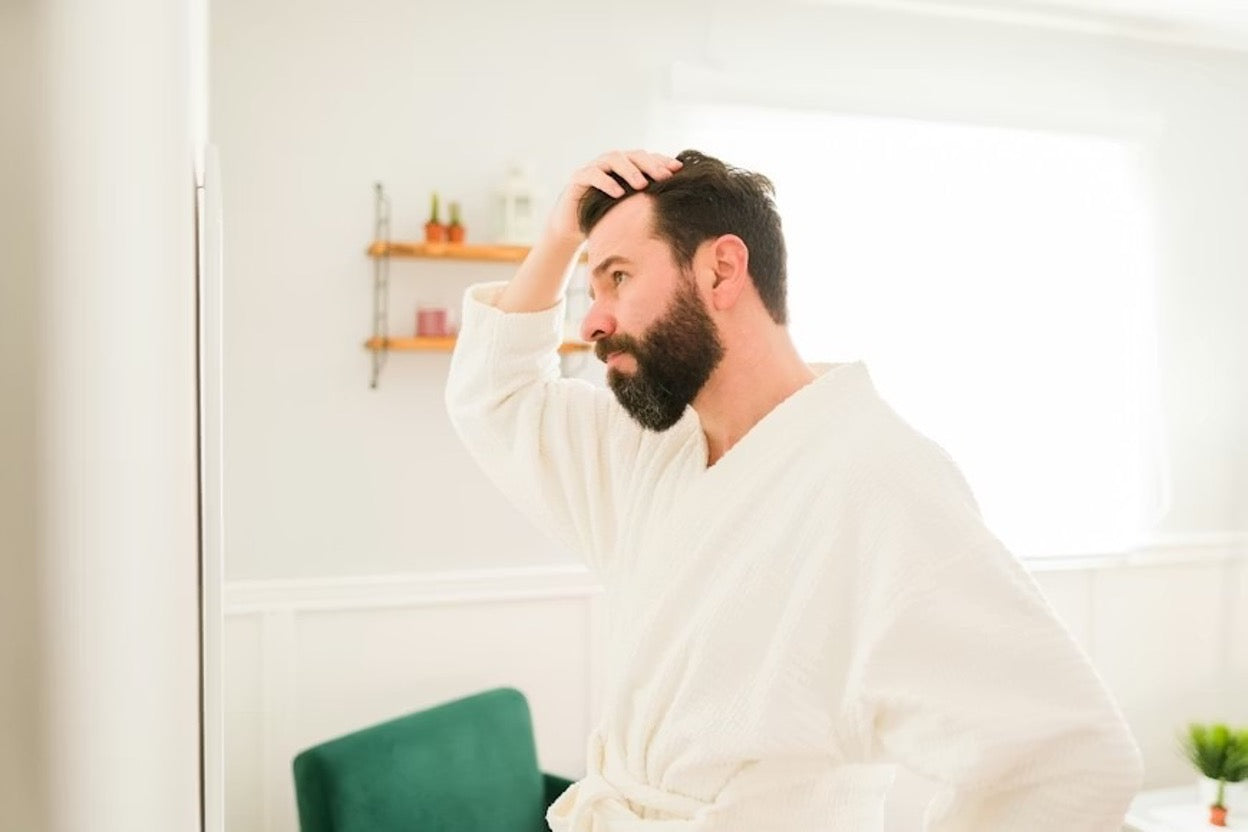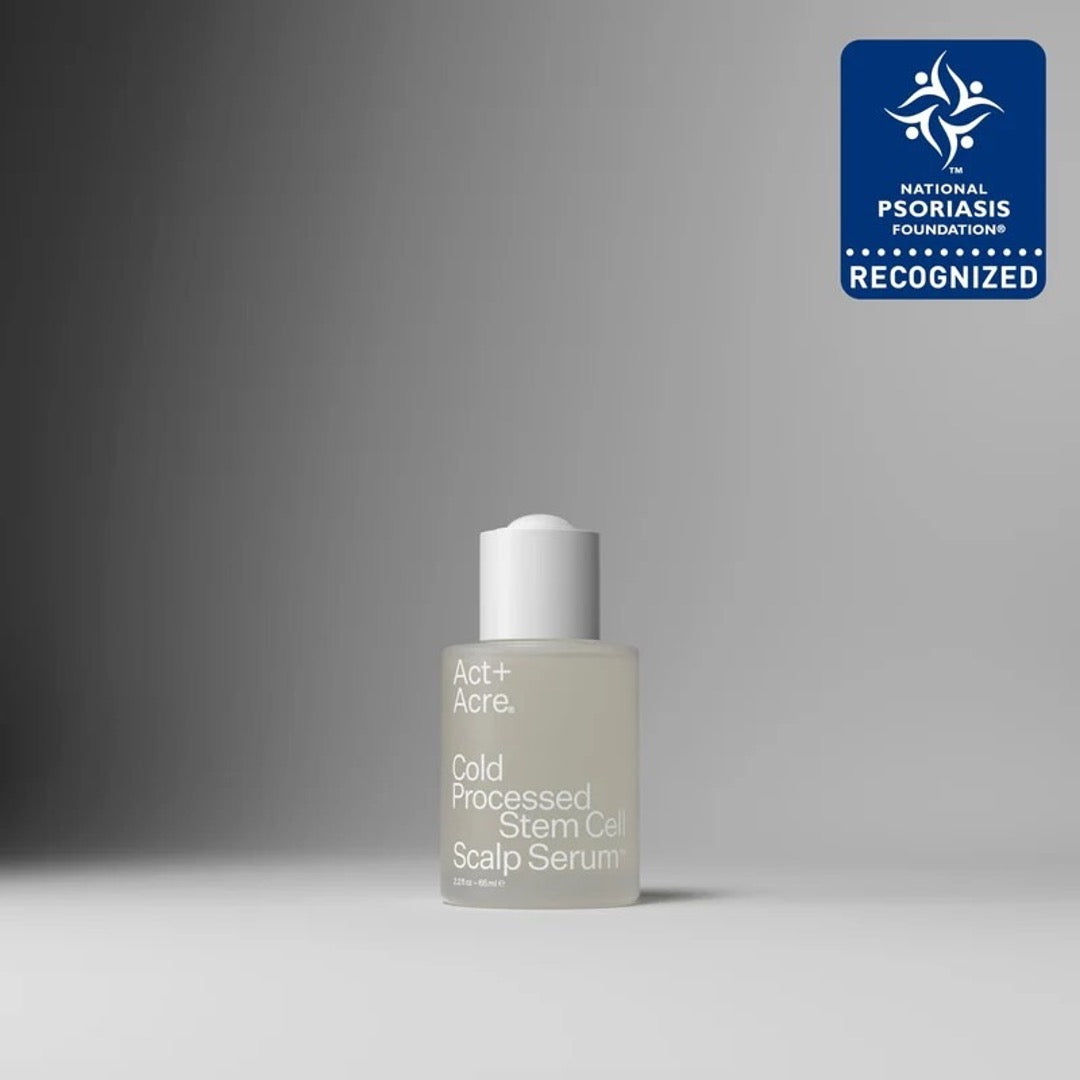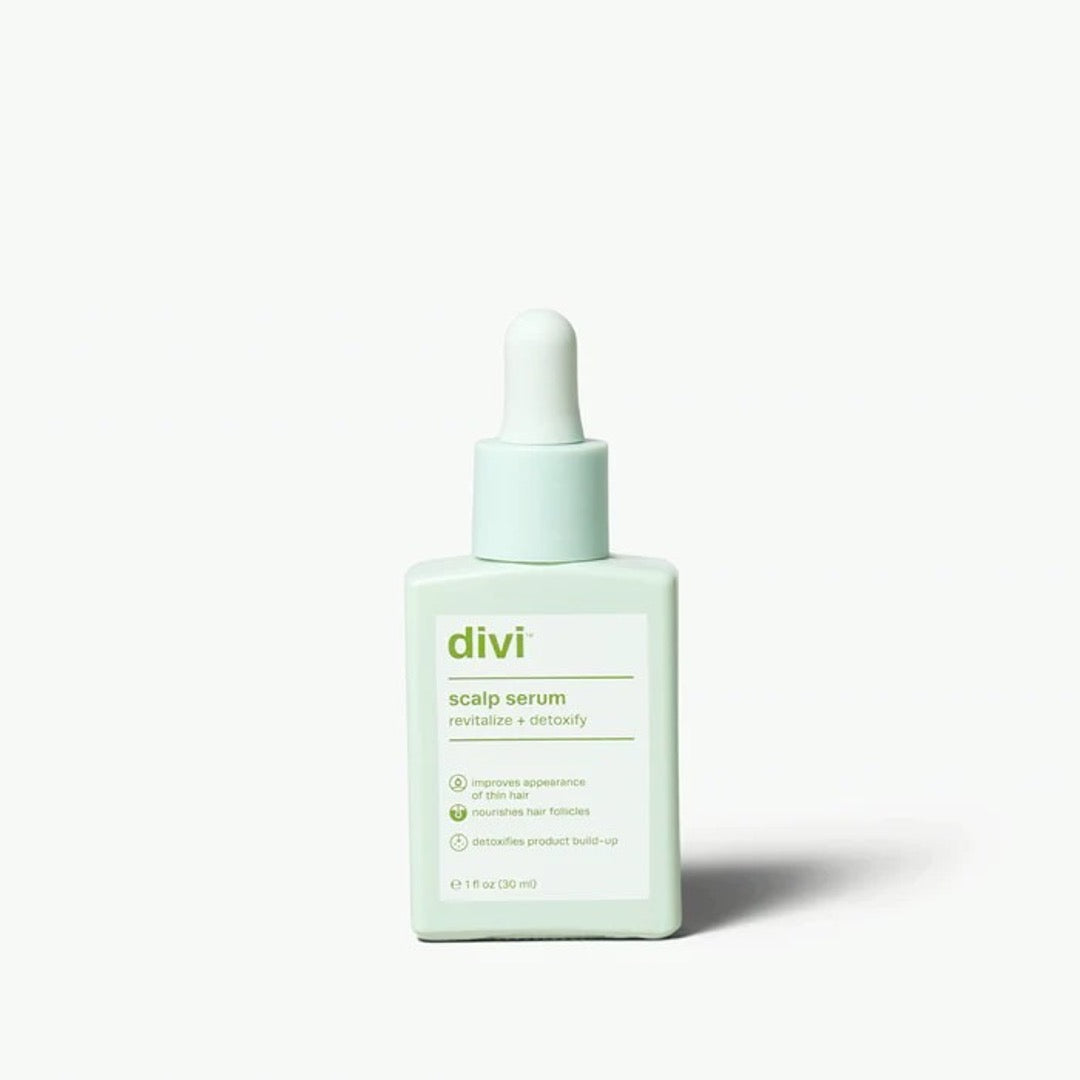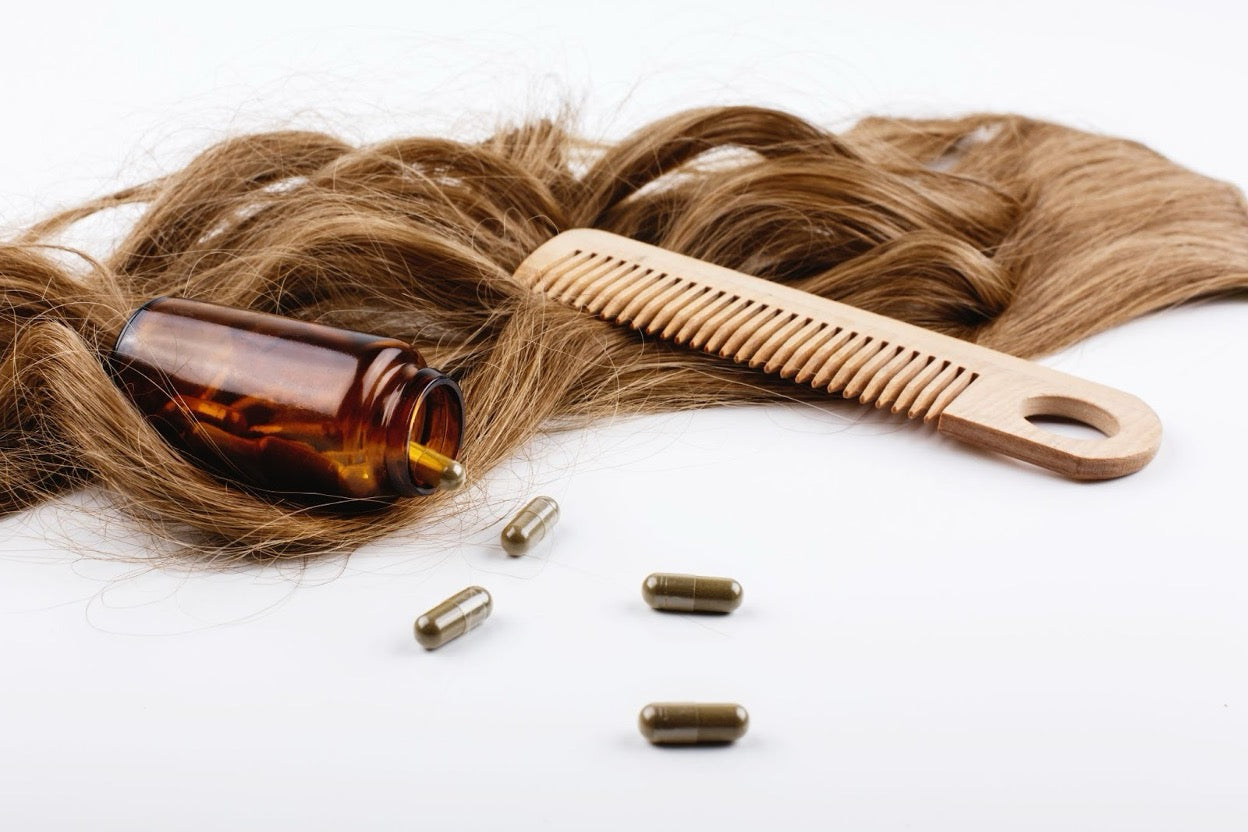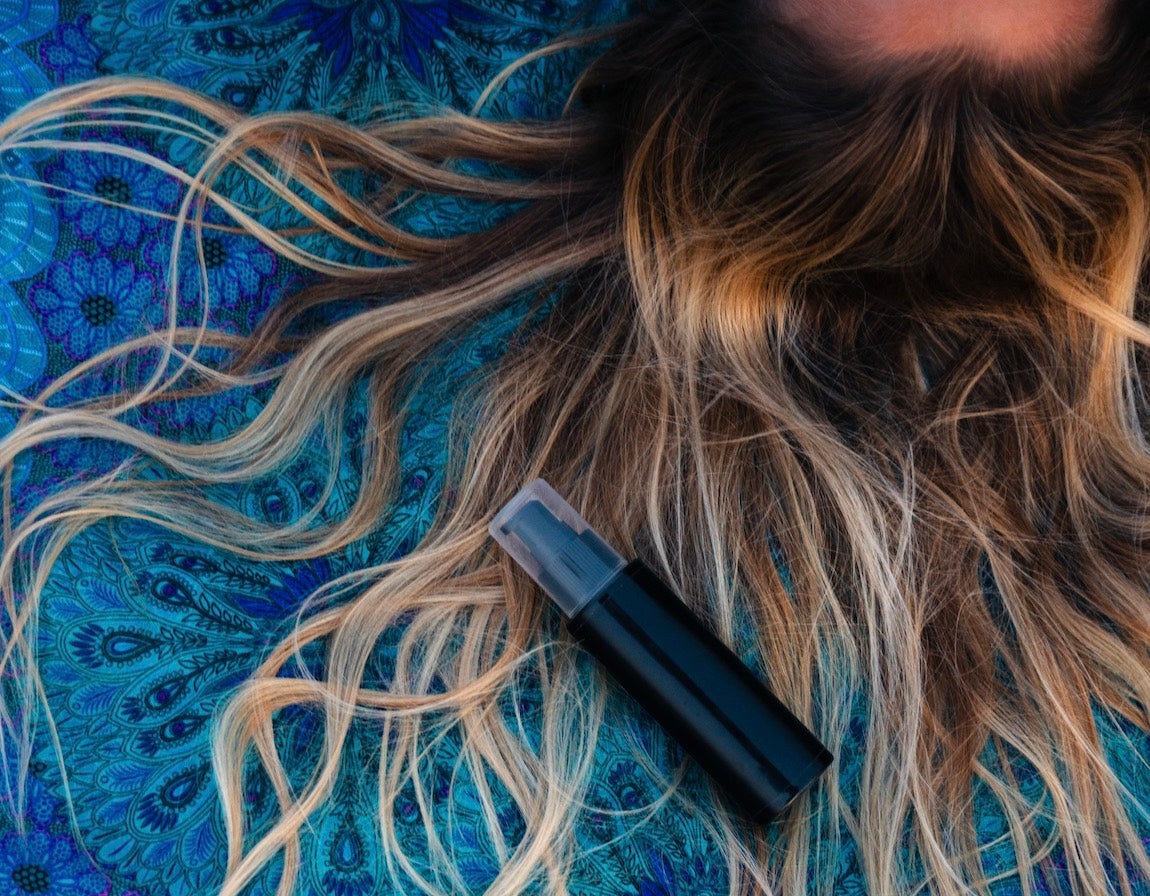Widow’s Peak vs Receding Hairline: How to Tell the Difference
BY TRYBELLO
Oct 03, 2025

Key Takeaways
- Widow’s peaks form a stable V-shaped hairline from birth or adolescence, while receding hairlines form an M-shape and gradually thin at the temples.
- Early receding hairlines can mimic a widow’s peak, and both may coexist, which can cause confusion.
- Receding hairlines progress over time, with miniaturization and thinning at the temples, unlike the static widow’s peak.
- Tracking hair history, photo comparisons, hair density, family traits, and wrinkle patterns helps distinguish a natural widow’s peak from male pattern baldness.
- Trybello Hair Repair & Anti-Stress Gummies, formulated with Anagain, L-Theanine, and zinc, reduce shedding, lower stress, and promote thicker, fuller hair with noticeable results in weeks.
Widow's Peak vs Receding Hairline: Spotting the Real Difference
Wondering if that V-shape on your forehead is a widow's peak or a receding hairline? It's a common confusion, but these hairline types have distinct patterns and implications.
What Each Hairline Looks Like
A widow's peak forms a distinct V-shaped point in the center of the forehead, with consistent hair thickness along the line. The name comes from 18th-century England, where widows wore peaked hoods during mourning.
A receding hairline usually forms an M-shape, with hair thinning first at the temples, creating two higher points on either side. Hair in these areas becomes finer and sparser over time.
Why People Often Confuse Them
Early receding hairlines can mimic a V-shape, resembling a widow's peak. Some men naturally have both a genetic widow's peak that becomes more noticeable as hair recedes.
Age also matters: in the late teens or early twenties, natural temple recession can make a widow's peak appear more prominent, often mistaken for early balding.
“Stress-Busting Gummies Target Hair Loss at the Source.
Why 761+ Women Rate This 5-Star Solution!"
Combat stress (the #1 cause of hair loss) with sugar-free gummies delivering 20% fuller hair in 12 weeks, rated "Very Good" by 761 verified customers.
Stress-Fighting Ingredients
- • Anagain™ – Clinically proven to improve growth and thickness in 3 weeks
- • L-Theanine – Reduces stress while boosting blood flow to follicles
- • Zinc – Protects follicles from stress damage, reduces inflammation
Sugar-Free Benefits
- • Diabetes-friendly, no weight gain
- • Made and shipped from USA
What Exactly Is a Widow's Peak?
A widow's peak is a natural hairline variation found in both men and women. It’s a genetic trait, like eye color or earlobe shape, not a condition that develops over time. Though surrounded by myths and superstitions, it’s simply one of many normal human features.
The V-Shaped Hairline Pattern
The defining feature is a downward point in the middle of the forehead, creating a V-shape. This point can be subtle or pronounced, formed as hair in the center grows lower than at the temples. The shape adds character to the face and can accentuate facial symmetry.
Genetic Factors
Widow's peaks are primarily inherited and influenced by multiple genes. They may become more noticeable during puberty as the hairline matures, which sometimes leads people to mistake them for early hair loss. The prominence of a widow's peak varies widely, and it occurs equally in males and females.
Key Facts
- Present from birth or develop in childhood/adolescence
- Determined by genetics, often running in families
- Degree of prominence varies among individuals
- Occurs in both sexes equally
- Not predictive of future hair loss or balding patterns

A classic widow’s peak forms a distinct V-shape at the center of the forehead. (Image courtesy of Aventus Clinic)
Famous People With Widow's Peaks
Celebrities like Leonardo DiCaprio, Chris Hemsworth, Blake Lively, Marilyn Monroe, Jack Nicholson, and Keanu Reeves all have widow's peaks. Their striking, stable hairlines show how this genetic trait can enhance appearance rather than signal concern.
Signs You're Dealing With a Receding Hairline
Unlike a widow's peak, a receding hairline signals early stages of androgenetic alopecia, or male pattern baldness. The main sign is change, a receding hairline evolves over time, unlike a static widow's peak. Recognizing these signs early can help you manage or slow hair loss.
The M-Pattern Development
A classic indicator is the M-shaped hairline. Hair recedes at the temples faster than the center, creating two higher points on the sides with a lower point in the middle. Over time, this M-pattern becomes more pronounced. In contrast, a widow's peak maintains its consistent V-shape, making the distinction crucial.
Thinning Around the Temples
Pay attention to thinning at the temples. Hairs may become finer, shorter, and less pigmented as DHT affects genetically susceptible follicles. Comparing density at the temples versus the crown can reveal early hair loss and distinguish it from a natural hairline variation.
Progressive Changes Over Time
A widow's peak remains stable, but a receding hairline continues to move backward. Hair loss often follows the Norwood Scale, progressing predictably in stages. Tracking changes over months or years provides clear evidence of male pattern baldness versus a naturally mature hairline.
Age Factors
Male pattern baldness usually begins between 20 and 35, though genetics can shift this earlier or later. By age 50, around 50% of men show noticeable hair loss. Early identification can help with timely treatment or lifestyle adjustments to maintain hair health.
5 Ways to Tell the Difference Between a Widow's Peak and Receding Hair
Distinguishing between these hairline patterns can be tricky, especially in early stages or if both exist simultaneously. Several practical methods help clarify which you have, using observation, documentation, and family history.
1. The History Test
Ask yourself: has this hairline always looked this way? A V-shaped line present since childhood likely indicates a widow's peak. Gradual changes from a previously straighter hairline suggest early male pattern baldness. Keeping track of your hairline over the years can provide valuable insight.
2. Photo Comparison
Compare photos from different life stages, especially with hair pulled back or wet. Look for consistent positioning versus gradual recession, changes in temple density, or the formation of an M-shape. If older photos aren’t available, start documenting now with clear, well-lit shots every few months to monitor subtle changes over time.

Tracking hairline changes over time helps identify natural patterns versus hair loss.
3. Hair Density Check
Examine hair thickness along the hairline. A widow's peak has consistent density and color, while a receding hairline shows progressively finer, thinner hairs at the temples before disappearing. Noticing miniaturization early can help guide hair care decisions.
4. Family History Factor
Genetics influence both patterns. Stable widow’s peaks in male relatives suggest the same trait, while male pattern baldness in the family indicates possible predisposition. Look at both maternal and paternal sides for clues.
5. The Wrinkle Test
Raise your eyebrows in the mirror. Horizontal wrinkles extending into previously hair-covered areas suggest recession, while wrinkles stopping at the hairline indicate a stable widow’s peak. This simple visual check can complement other observations.
Difference Between a Widow's Peak and a Receding Hairline
| Method | Widow's Peak | Receding Hairline |
|---|---|---|
| History Test | V-shaped since childhood; stable over time | Gradual change from previously straight hairline |
| Photo Comparison | Hairline position consistent in past photos | Gradual recession, M-shape forming, thinner temples |
| Hair Density Check | Consistent thickness and color | Hair becomes finer and thinner at temples |
| Family History | Male relatives with stable widow’s peaks | Family history of male pattern baldness indicates predisposition |
| Wrinkle Test | Wrinkles stop at hairline | Wrinkles extend into areas previously covered by hair |
Can You Have Both a Widow's Peak AND a Receding Hairline?
Yes, it’s common to have both a natural widow's peak and a receding hairline. Men with genetic widow’s peaks who later develop male pattern baldness may find the pre-existing V-shape masks early recession or makes hair loss appear more advanced than it is.
How a Widow's Peak Changes With Male Pattern Baldness
Recession typically begins at the temples while the central V-point remains intact, creating a more pronounced V-shape. Over time, even the widow’s peak may recede, though it often resists hair loss longer than surrounding areas due to varying follicle sensitivity to DHT.
Why This Combination Creates Confusion
A stable widow’s peak can be mistaken for early hair loss, while early temple thinning may be dismissed as normal. Tracking hairline changes over time is crucial: a true widow’s peak remains consistent, whereas a receding hairline—even with a V-point—progressively moves back and shows thinning.
What to Do If You Have a Receding Hairline
If your hairline is receding rather than a widow’s peak, early intervention is key. Several treatment options exist depending on severity and preference, and starting early often yields the best results.
Medical Treatments
FDA-approved options are the first line of defense. Minoxidil (Rogaine) is a topical solution that stimulates follicles and increases scalp blood flow. Applied twice daily, visible results may take six months, with continued use needed to maintain benefits.
Finasteride (Propecia) blocks testosterone’s conversion to DHT, slowing hair loss and promoting regrowth. Taken orally once daily, ongoing use is required to sustain results.
Advanced treatments like PRP therapy, hair transplantation, or laser therapy are options for more significant hair loss. Each varies in cost, invasiveness, and effectiveness, so consulting a dermatologist or hair specialist is essential.
Natural and Supportive Options
Anagain, a plant-based ingredient derived from pea sprouts, can stimulate hair growth by reactivating dormant follicles. Often found in shampoos or serums, it works best alongside other treatments to support hair density and overall scalp health.
Lifestyle Changes
A balanced diet rich in protein, iron, zinc, and vitamins (especially B and D) supports hair health. Managing stress, getting adequate sleep, and avoiding harsh styling can help maintain hair quality.
Hairstyles That Work
Short, textured cuts, crew cuts, buzz cuts, or fades, camouflage thinning areas. For advanced recession, embracing a shaved look or “power donut” style creates a confident appearance. Avoid comb-overs or very long hair, which highlight thinning areas.
Boost Hair Growth and Reduce Shedding with Trybello
Struggling with thinning hair or hair shedding? Stress is a major contributor to hair loss, but Trybello Hair Repair & Anti-Stress Gummies are designed to tackle both hair health and stress at the same time.

Trybello helps strengthen hair follicles while lowering stress, supporting resilient strands.
Formulated with Anagain, a clinically proven botanical ingredient, these gummies stimulate hair growth, increase thickness, and promote fuller, healthier hair. L-Theanine helps lower stress levels and improve scalp blood flow, while zinc protects follicles and reduces inflammation, ensuring strong, resilient hair.
With consistent use, many users notice improved hair thickness in just 3 weeks, and a 20% increase in hair fullness within 12 weeks. Completely sugar-free, vegan, and cruelty-free, these gummies make hair care simple and safe, without compromising health or diet.
Trybello has a 120-day risk-free trial, so you can experience the transformation yourself: less shedding, stronger strands, and revitalized hair. Join thousands of happy customers who’ve enjoyed the benefits of daily hair support with this easy, natural supplement.
Boost your hair health today with Trybello Hair Repair & Anti-Stress Gummies!
Frequently Asked Questions (FAQs)
Trending Topics
See our latests posts #TRYBELLO



